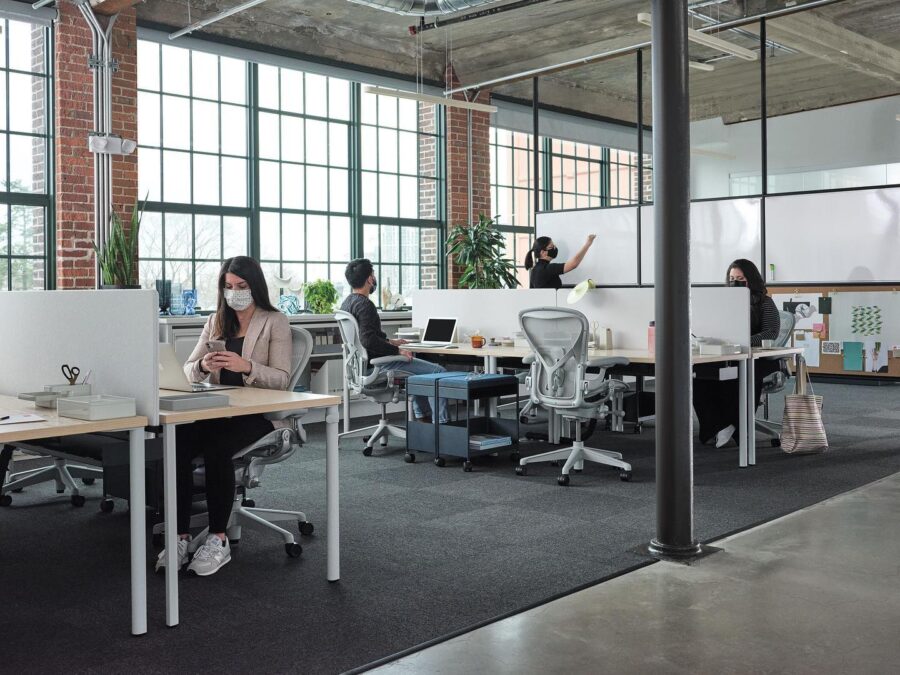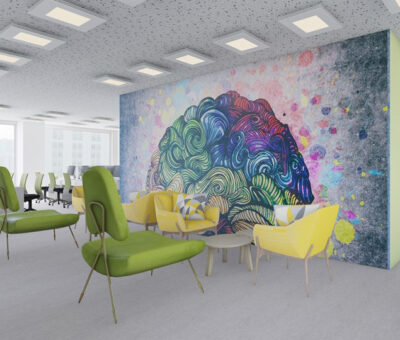Herman Miller: What’s The Future of The Office
The challenges posed by the pandemic have precipitated many questions about the purpose of the workplace. Why go into the office when you can avoid the commute and stay comfortable and productive at home? Why maintain corporate offices when you can instead support distributed work and save money on real estate? Even pre-pandemic, organizations were asking these questions—and COVID-19 has rapidly accelerated the conversation.
Herman Miller is one organization excited about this course toward a more distributed model of work— one where the office will continue to play a critical role in helping organizations achieve their desired business results. In fact, they’ve been preparing for this new way of working for a long time. Now they want to help you further explore the shifting purpose of the workplace and gain a clearer perspective on why the office will remain relevant far into the future.
From Open to Empty: The Impact of Office Densification
Over the past several years, work—and workplaces—have become increasingly distributed, with people working in their homes, coffee shops, coworking spaces, and more. People are also working at various times throughout the day, based on their preferences, family obligations, or desire for real-time connections with colleagues who may be working in different time zones.
Despite this shift in how and where work happens, many organizations tend to think of employees as either “office workers” or “remote workers” and expect them to work traditional business hours. At the same time, many organizations have prioritized densification strategies (crowding more people into less space)—over activity-based work strategies (diversifying the workplace to meet people’s needs and daily tasks)
The result? Open, desk-intensive office spaces that haven’t been well received by employees. Herman Miller’s research supports this. Data analytics from their recent workplace utilization studies indicate that while there have been more desks placed in open floorplans, there has also been lower and lower utilization of those desks. People don’t feel supported, and they are seeking other places to work—often outside the office.
From Experiment to Reality:
Distributed work becomes the norm when COVID-19 forced much of the world into quarantine, working from home became an extended experiment. While the experience created mixed results for the world’s workers, it significantly changed the opinions of many organizational leaders about the viability of working outside of the office.
According to Harvard Business Review, 42 percent of employers now say that much of their workforce can work remotely compared to 14 percent before the pandemic.2 This, along with the economic challenges posed by the crisis, is causing organizational leaders to revisit the purpose of their offices. The office as we once knew it is no longer viewed as a requirement for enabling employee productivity, but it can be the cornerstone of a thriving culture and a successful distributed work strategy.
From Office to Everywhere: Building the Workplace of the Future
For workplaces to remain purposeful, they must help people do their best, no matter where or when they are working. And that means the workplace needs to evolve from a singular space into a dynamic network of places from which employees can choose to work on a given day—and over the course of the week. The office will become a valued on-demand amenity that fosters the connections and interactions that we miss while working alone. It will also serve as a place that cultivates learning, preserves culture, and expresses the organization’s brand.
Many employees will work from offices daily, but for others, distributed working will be the norm. Fewer employees will come to the office each day just to check emails and attend meetings, so generic open-plan desks and traditional conference rooms will be less useful. People will seek offices with work settings uniquely tuned to socialization, individual focus, and immersive teamwork.
Examples of these types of spaces include:
- Areas that will encourage people to interact with their extended networks (colleagues you don’t work with every day). Building these relationships is critical for maintaining culture and helping people feel a sense of purpose and belonging.
- Safely maintained, reservable on-site workstations. These are especially important since many people have difficulty focusing at home, especially on brain-intensive work.
- Highly interactive settings that facilitate immersive on-site collaboration. Places like these give people the time, space, and tools to solve complex problems that are difficult to address remotely.
By creating offices that fulfil people’s needs on-demand, both the organizations and their people will flourish. Because distributed work will lessen the need for dense occupancy planning, businesses will save on facilities costs and create workplaces that are more valuable to their employees. And by giving people the option to work in a place that fulfils their well-being needs and diverse work processes, they’ll have the autonomy and security they need to thrive.
Empirical data supports this approach. A Gallup study published in January 2020 indicated that employees who could choose when to come into the office and when to work from home had higher levels of employee engagement than those who spent most of their time in the office or working remotely.3 Add to the mix a well-considered work-from-home program—with supportive ergonomic furnishings and essential technologies—and you can count well-being and productivity on the list of positive outcomes.
Key Insights
- Distributed ways of working—where people are empowered to work at different times and places—aren’t new, but they’ve been accelerated by the pandemic.
- People can be productive working elsewhere, but offices still provide great value as on-demand resources for individuals and teams.
- To remain relevant, offices of the future will need to build culture and community, support individual focus, and facilitate intensive teamwork.
- The work from home experience is different for everyone. Companies should continuously strive to help people stay healthy and productive, no matter where they are working.
How Herman Miller Can Help
Whether you’re just beginning to transform your workplace or you’ve been doing so for years, Herman Miller has insights, products, and services to help your people stay productive and healthy in the office, at home, and beyond. They can help you:
- Gain insights
- Reach business goals
- Develop a work from home program
- Measure and improve strategy
- Outfit spaces with supportive furnishings
Contact Barker Street for Herman Miller products in South Africa
You might also like...
-
Hambanati Office Solutions: 6 Things To Consider When Renovating Your Office

Choosing the right office furniture is essential to create a comfortable and functional work environment. Hambanati Office Solutions can help you select the most suitable ...
-
Hambanati Office Solutions

A trusted provider of premium office desks and furniture solutions in South Africa, Hambanati Office Solutions is the go-to store for businesses big and small. ...
-
Office Group: Perfect Match at a Fraction of the Price!

Finding stylish, high-quality office furniture that doesn’t break the bank can feel like an impossible task. With so many options available, it’s easy to get ...
-
Kistan Office Solutions: Giroflex

A market leader for high-quality seating solutions, the Giroflex range of office chairs is now available from Kistan Office Solutions in eight fresh new hues. ...


























